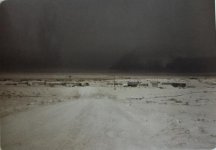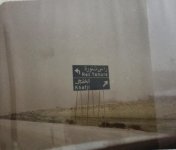LoboGunLeather
US Veteran
Early afternoon, getting hot, and sunglasses were often worn. The army did eye exams before we deployed, and issued us sturdy clear Rx glasses, and sunglasses, too, mine are both Bifocals. For those who did not need RX sunglasses, the army bought and issued expensive civilian sun glasses, in addition to our goggles. Here, still wearing our protective masks on our sides, and helmets at the ready.
For lunch, we walked in a line and pulled an MRE out of boxes, with the MRE's packed so we couldn't search thru for our favorites. Lots of trading for what was popular and not popular. I actually liked all the menu MRE's, although most soldiers didn't like the ham and lima beans, referred to by another name, not mentionable here. No cigarets like in past wars, but came with Skittles, and a tiny bottle of Tobacco.
Real friendships were formed, and some between our men and women continued to marriage, and perhaps sadly, divorces.
as always, stay safe... SF VET

SF VET mentions Tabasco sauce being provided with rations. Tabasco was very popular in Vietnam also, tiny little (1-oz. I think) bottles passed out in cartons with C-rations. Just about everyone had a bottle of Tabasco in a pocket or slipped under the retention band on the helmet cover.
I learned later on that the McIlhenny family (owners of the Tabasco brand) provided all of those little bottles at no charge, all they asked was that the military take care of transportation and distribution to the troops.
I remain loyal to the Tabasco brand to this day, over 50 years later. Good product, great American company.












